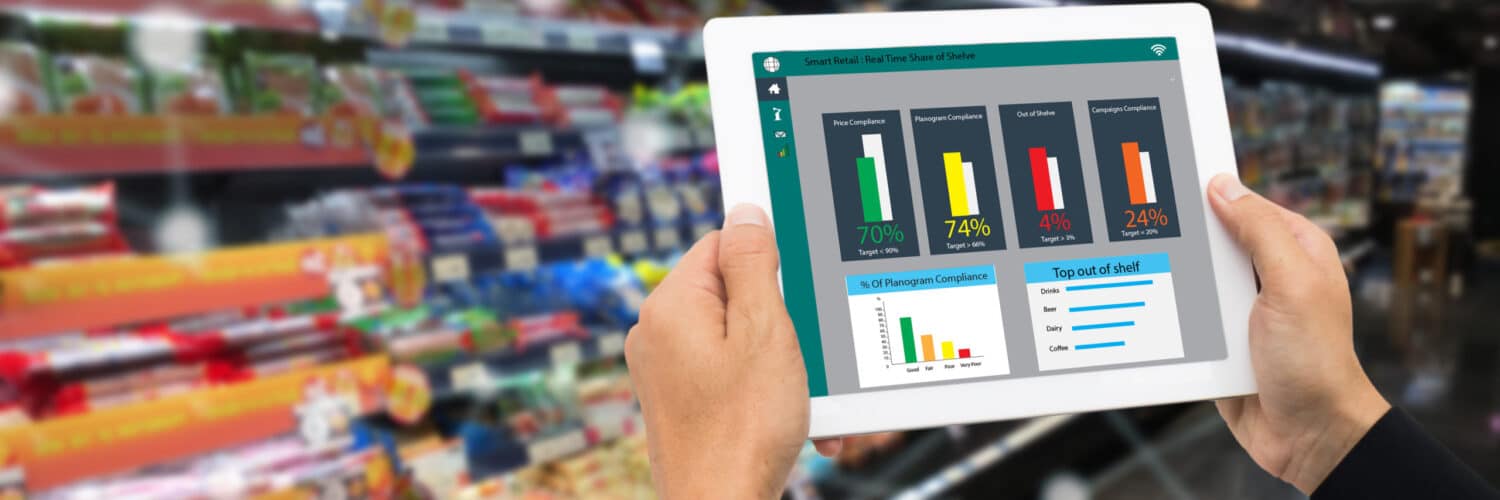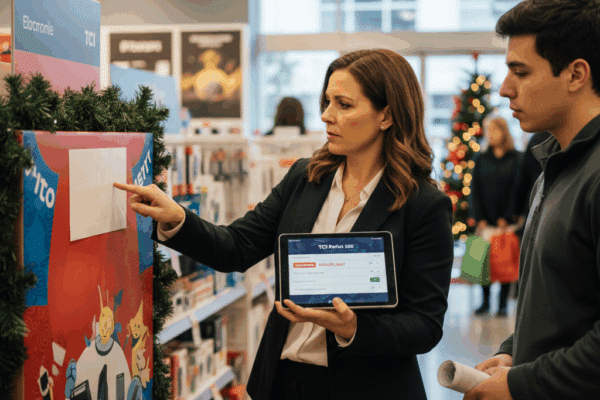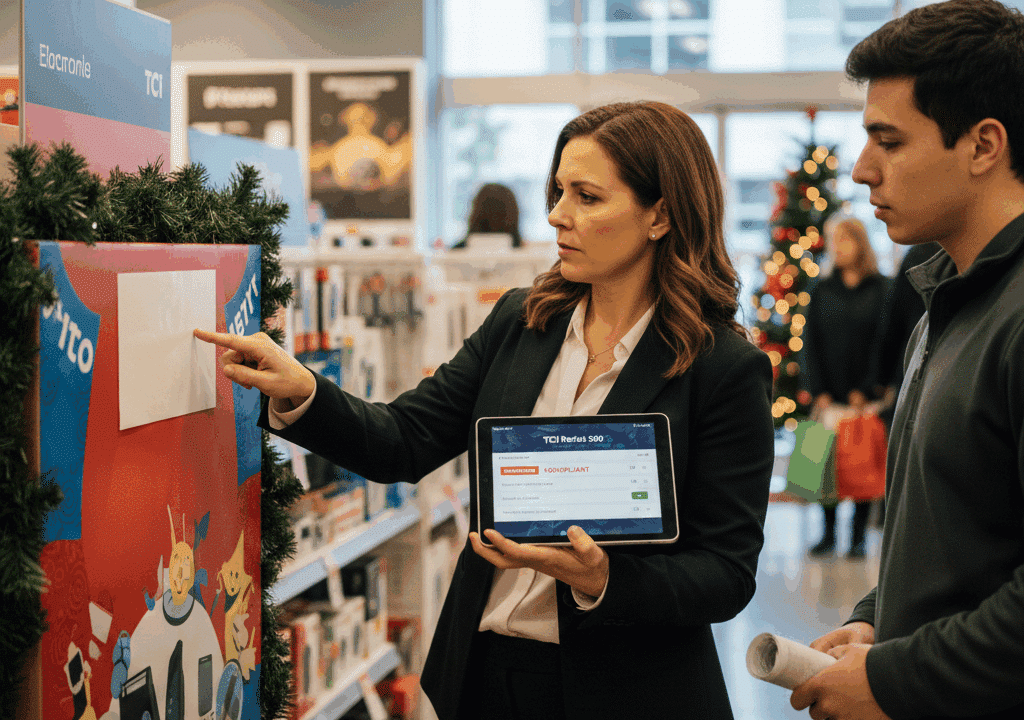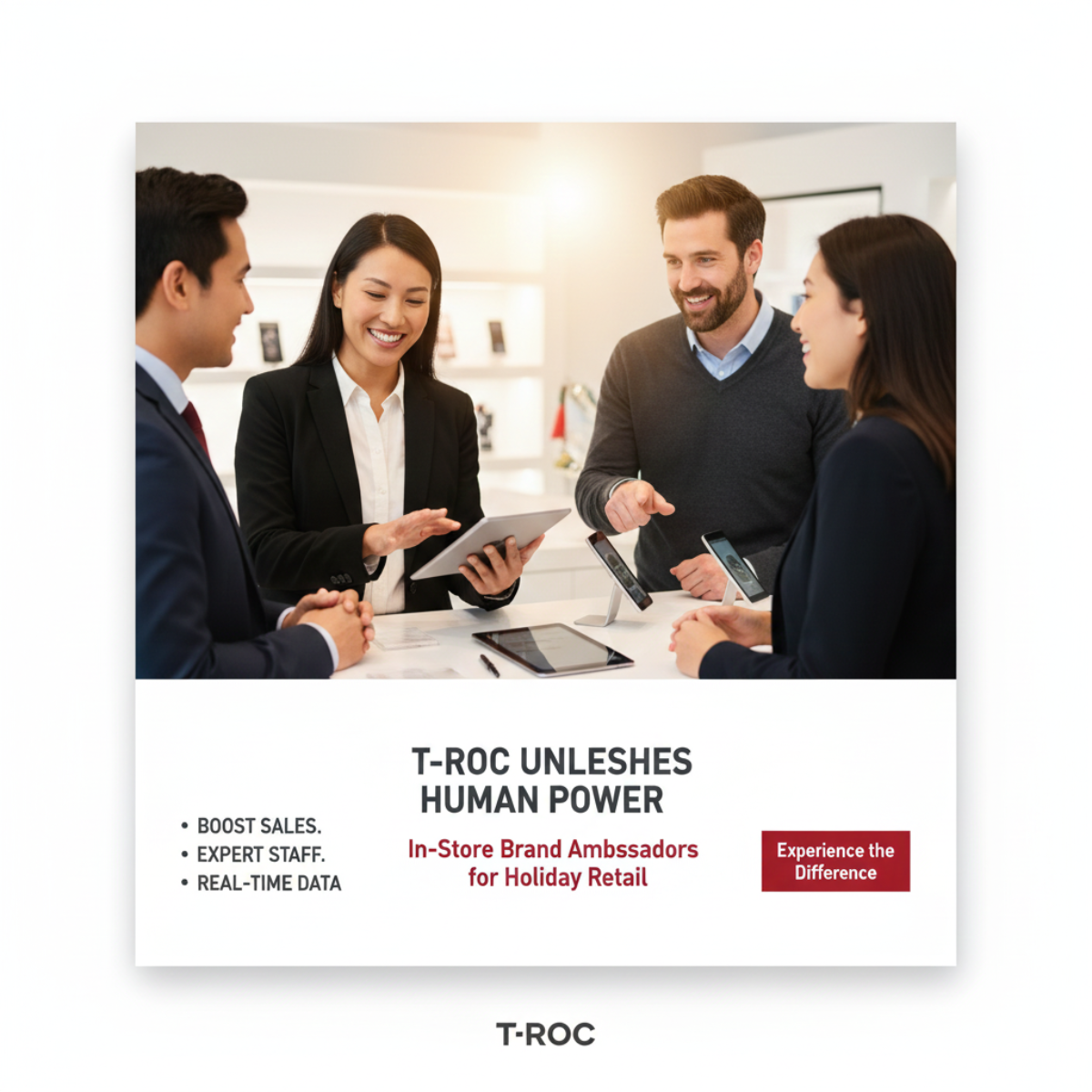
Retail Business Intelligence: Seven Ways Digital Is Driving Retail Sales.
Retail Business Intelligence: How Brands And Retailers Are Turning Technology Into Added Sales.
What problems can business intelligence solve? If you’re a brand or retailer, the answer is a lot of them. This post explores seven key problem/solution scenarios where retail business intelligence can be a game changer.
It’s no great revelation that technology continues to change the landscape of retail. The fact is, technology, specifically data-driven intelligence, is changing the playing field for just about every type of business. According to a survey of more than 2,500 users sited on bi-survey.com, the three topics identified as the most important trends in their respective businesses were data quality/master data management, data discovery/visualization and fostering a data-driven culture.
What is retail business intelligence?
Retail business intelligence is the process of capturing and compiling raw data and distilling it down to actionable insights that drive more informed and, ultimately, more impactful business decisions with the goal being to cost-effectively increase retail sales and bottom-line revenue.
That’s the condensed definition. However, retail business intelligence extends to so many operational and management areas of retail that it really has become a necessary ingredient for success in today’s digital economy. A good retail business intelligence program provides incredibly deep business insights and new levels of transparency into retail management, merchandising, marketing, operations, the competitive landscape, customer behaviors, employee performance and many other key areas of retail performance.
Implementing a strong retail business intelligence strategy is nothing short of a matter of survival for brands and retailers these days, whether operating brick-and-mortar stores, ecommerce sites, or selling over both.
In this blog, we’ll point out a few key challenges brands and retailers are facing and show you how retail business intelligence can drive smarter, faster and more effective solutions. Put a solid retail business intelligence program in place and you’re on your way to optimizing performance across your business areas and driving retail sales.
1. I’m finding visual merchandising difficult to track and measure. Are my displays and stores compliant with my standards and optimized for my customers?
Problem – Visual merchandising is the front line of retail sales. How stores look and feel; how products are showcased; how shelves and aisles flow to create an easy and enjoyable shopping experience are all keys to generating sales and revenue. However, keeping track of all the moving parts can make it difficult to know whether your merchandising program is really optimized or not.
Solution – New advancements in intelligent data capture and analysis can provide a crystal-clear picture of retail merchandising and displays. Retail field teams outfitted with mobile devices can instantly capture data that reveals product appearance, marketing and promotions, pricing, competitive intel, brand compliance, empty displays, even store cleanliness. With an effective data capture solution, this intelligence is supported by real-time digital photography and then distilled down to actionable reports that can be called up by decisionmakers in real time. The result is immediate and accurate visibility into merchandising and store appearance, which leads to more responsive decisions and quicker issue resolution. These insights allow merchandisers to fine tune programs and implement changes before they can grow into larger problems.
2. I’m having a difficult time effectively managing product inventory
Problem – If customers can’t find your products, it’s pretty hard to expect to make a lot of sales. Empty shelves due to inventory velocity lagging behind demand, or worse, because items haven’t made their way from the backroom to store shelves is the kiss of death for retail sales.
Solution – Again, retail business intelligence provides the clear visibility into sales and inventory to prevent these missteps. Brands and retailers can instantly access sales data and inventory schedules to ensure sales are never lost due to a lack of availability. Additionally, by reviewing historical data compiled by retail business intelligence software, it’s possible to more accurately predict order volumes and inventory needs for the quarters and peak seasons ahead.
3. How do I make sure my marketing and promotions dollars are wisely spent?
Problem – One hard reality that many brands and retailers face is the launch of lackluster promotions and marketing initiatives. Too many retail promotions fall short of expectations leaving brands and retailers wondering what in the world went wrong. There’s a good chance these marketing programs slid off the rails because they were launched around market and customer intel that was either incomplete or just plain inaccurate. But once the money is spent, there’s no getting it back, which is why it’s so important to make sure your marketing dollars are being spent wisely before you write the check.
Solution – Retail business intelligence provides brands and retailers with invaluable data and insights to help guide marketing and promotional programs. It delivers actionable intelligence regarding store and product performance, traffic patterns, customer preferences, competitive landscape, even geographic and demographic data. Naturally, the more you know about your target and market variables, the easier it is to build marketing and promotional programs likely to deliver the level of ROI you expect. Additionally, retail business intelligence allows you to fine tune programs on the fly. Because you’re able to measure and track performance in real time, it’s a lot easier to make adjustments to optimize your promotions. In essence, retail business intelligence allows you to run fluid marketing programs that can be adjusted and adapted as customer needs and market conditions change.
4. How do I measure employee and/or 3PL performance? How do I make sure they’re completing tasks and living up to service and brand standards?
Problem – It can be difficult to effectively manage field personnel and sales teams on a regular basis. For one thing, their daily responsibilities often lie outside the vision of management. Yet, these are the team members who are critical to every aspect of sales from merchandising and inventory to customer engagement and fulfillment. How do you track employee and vendor performance and ensure compliance? This is the million-dollar question for a lot of brands and retailers.
Solution – Retail business intelligence solutions automate the task management process which also empowers your teams, whether in-house our outsourced, to perform at their best. Teams in the field now have digital tools that don’t just make their jobs easier, they track performance, store visits, and compliance. When field teams are able to witness and invest in their own success, it inspires them to be their very best. In stores, retail business intelligence provides managers and sales personnel with clear responsibilities and guidelines – opening and closing checklists, restock and merchandising tasks, SOPs and compliance, service standards, required sales training, and a host of other tasks. Technology improves performance by providing employees and 3PLs with a defined set of tasks, as well as clear visibility into how well they are getting the job done. This tends to add up to teams that are accountable, empowered and motivated to excel.
5. How do I know what my competitors are doing and thinking? Where do I find my competitive edge?
Problem – There’s a fine line between being reactive to the competition and being deeply informed on how, why and where your retail business stacks up against the competition. How do you gain a competitive edge that positions your brand or company in ways that win customers and command market share?
Solution – Once again, a solid retail business intelligence strategy provides the data and insights necessary to analyze the market situation and your competitive set with real-time efficiency. You’ll know what products in your portfolio are performing and which ones aren’t. You’ll see what stores and regions are generating sales and which ones aren’t. You’ll gain accurate intelligence on competitive product offerings, marketing programs, visual merchandising and pricing. By analyzing this data, brands can stop reacting in the short term and start making informed and effective decisions to win that competitive advantage over the long term.
6. How do I improve customer engagement? How do I make sure my sales teams come across as friendly and informed experts?
Problem – Today’s customer is far more demanding and impatient than those of generations past. Brands and retailers need to provide an easy and enjoyable shopping experience, and it must be driven by sales professionals who really know their stuff. There will be few second chances in the new age of retail, so it’s more important than ever to make sure in-store teams are prepared to provide exceptional customer service from the moment a customer walks in the door.
Solution – What if a sales rep could pull up detailed product data instantly to answer any questions a customer might have on the spot? This is possible when you employ retail business intelligence. These solutions don’t just capture and compile data. They can also serve as engagement tools that provide in-store teams with instant access to critical information to closing the sale, like product specs, warranty details, available options, pricing, financing options, available inventory and much more. Additionally, reps can capture customer data, such as names, addresses, phones and emails, at the point of sale to continue the conversation and build long-term relationships and brand loyalty.
7. How do I link all my sales and marketing channels?
Problem – Retail has become an omnichannel industry. The rise of online sales has brought with it new challenges in customer engagement, inventory control, fulfillment, and brand and marketing consistency. It has become critical for brands and retailers to unify their retail operations and shopping experiences across a number of different channels in order to remain competitive.
Solution – Retail business intelligence provides the real-time visibility and control necessary to manage sales across both brick-and-mortar and virtual channels. Most specifically, it facilitates effective inventory management ensuring products are always available how, when and where customers want them – purchasing online and picking up in store (BOPIS), home delivery, shopping online and purchasing in store, even buying online and returning items in store. Additionally, retail business intelligence allows brands and retailers to track sales across these various channels, making it easier to anticipate future inventory needs and customer shopping preferences, which also helps drive more effective promotions, merchandising programs, and new product launches down the road. Retail business intelligence is ultimately about providing relevant and actionable data and insights necessary to streamline operations and increase sales. In the ultra-fast and omnipresent retail universe we now operate in, there’s a premium on real-time intelligence that can help hold it all together.
Takeaways
Retail business intelligence provides brands and retailers with data-driven validation in their critical decision-making. From merchandising to inventory to front-line customer engagement, business intelligence reveals the pain points to address, the pitfalls to avoid, and the opportunities to capitalize on with a level of clarity and accuracy that just wasn’t possible before the retail technology revolution.
The game-changing benefits of retail business intelligence are fueling a new era of retail sales. Embracing digital data solutions is no longer an option for brands and retailers to consider, it’s a matter of self-preservation in the most competitive, customer-centric, and quickly evolving environment retail has ever known. In the years ahead, retail business intelligence will be the difference between winning and losing for many companies. The hard truth is, you either get on board or you are sure to get left in the dust.
If you found this post helpful, you can learn more about retail business intelligence and other retail management best practices at www.trocglobal.com. Be sure to check out our other retail-focused blogs at https://trocglobal.com/company/#blog.
TROC is the leading provider of premier staffing outsource, software, managed technology services, and consumer insights for the top global brands, retailers, manufacturers, service providers, and distributors. The company’s distinctive solutions address the entire lifecycle of brick and mortar brand and retail operations by combining retail expertise, best practices, and technology to help its customers achieve sales and operational excellence as well as a sustainable competitive advantage. As a Retail 4.0 thought leader, T-ROC enables companies with high-value products in the physical world to thrive through the digitalization of the physical shopping experience. To learn more about T-ROC, visit www.trocglobal.com.








